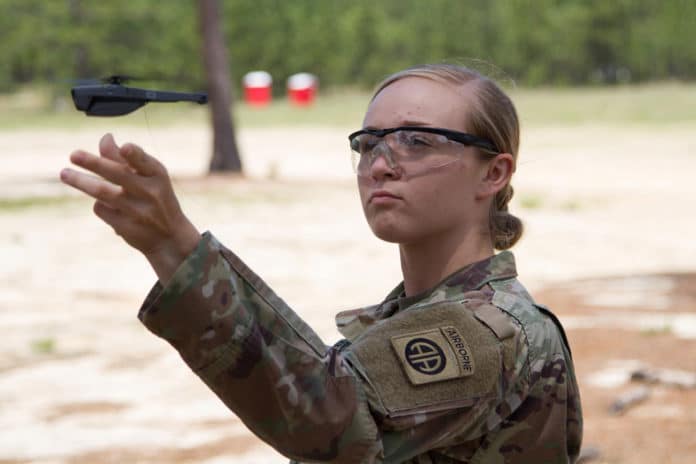It is not new when the U.S. Army is trying to make its military services more advanced. Some more recent technologies like remotely controlled drones or copters can enable close-up exploration of a battle zone. Such systems can help enhance the safety of soldiers heading into potential danger, as well as in gathering the essential data.
Oregon-based FLIR System has manufactured a pocket-sized Black Hornet personal reconnaissance system (PRS) for use by military forces, government organizations, and disaster relief agencies across the world. The PRS uses the Black Hornet 3 uncrewed aerial vehicle (UAV), which is an upgraded version of previously developed Black Hornet PD-100.
After several years of development, this pocket-sized, remotely controlled, camera-equipped drone is heading to Afghanistan this month with the 82nd Airborne Division. This will be the first infantry Army battalion to employ pocket-sized drones in the war-torn country, according to Stars and Stripes.
The drone measures just six inches in length and weight only 33 grams. The tiny size of twin-rotor Black Hornet makes it easy to transport and more importantly, hard to spot when it’s in the air. Besides, this remotely controlled drone is pretty much silent, which increases its stealthiness as it goes about exploring the enemy territory.
Each drone comes equipped with two cameras as well as thermal imaging cameras. They can survey areas in the field up to 2 kilometers from the operator and stay flying for about 25 minutes at a time. The drones can stream live video and HD still images through an encrypted data link connected to an operator located up to 1.2 miles away.
They can fly at a maximum speed of approximately 21.49km/h. A field replaceable battery powers the main rotor and the two-bladed tail rotor.
Although the Black Hornet can be carried as a single unit by one soldier, FLIR Systems also offers a compact launch unit, which can be attached to a military vehicle and used to deploy up to four of the drones at a time.
Back in May 2018, a $2.6m contract was placed with FLIR Systems by the US Army. In January this year, they signed $39.6 million deal with the company to supply additional PRS units for the Army’s Soldier Borne Sensor program.
“This kind of technology will be a life-saver for us because it takes us out of harm’s way while enhancing our ability to execute whatever combat mission we’re on,” said Sgt. Ryan Subers, who received the training, quoted in an Army statement.
